#Also the fact that a lot of a particular brand of art makes Vox into such a sex pest bit that’s a totally different thing shdhjshs
Explore tagged Tumblr posts
Text
Actually, no, I don’t like that the accepted fanon is that the fight was Alastor’s fault tbh! And I especially don’t like that the general take is ‘Vox confessed his feelings and Alastor was disgusted and went running scared’ like being ace or aro or both somehow negates the fact that he’s a grown ass man and not a 7 year old on the playground running screaming from cooties! Alastor isn’t a child! He knows what sex and romance are! Even if your personal hc is that he’s repulsed by both, Vox was his best friend, and it’s irritating that so many ppl seem think Alastor would be unable to kindly reject him and still very much want to continue their friendship. Yanno, a thing people do all the time and that Alastor has also likely done before.
IDK fanon is gonna do what it’s gonna do, I can only create my own work, but the absolute refusal to put anything on Vox, as if it’s impossible that he could have been any part of the problem like say, pushing to include Valentino, insulting Alastor’s preference for older tech, Vox pushing Alastor away bc he didn’t want ppl to think he was weak and dependent on him, the potential list goes on! But the fandom will not hop off of ‘Vox confessed and Alastor cruelly rejected him and ran away scared and now Vox is sad bc Alastor hurt him and it’s all Alastor’s fault and Alastor feels nothing about it and is actively disgusted by Vox.’ Just. Ghhgghhh.
#Ramble ramble just ugh#Also the fact that a lot of a particular brand of art makes Vox into such a sex pest bit that’s a totally different thing shdhjshs#I just hate it and I’m complaining so#I also hate sex pest Vox you heard it here#Vox is my favorite character so interacting w work in this fandom is like digging through a trash bin#Searching for gold nuggets#I’m sure for other ppl it’s the opposite#’What is this limp banana peel doing in my pile of gold?’#But for me it is a landfill
66 notes
·
View notes
Text
How the Washington Post’s TikTok became an unofficial 2020 campaign stop
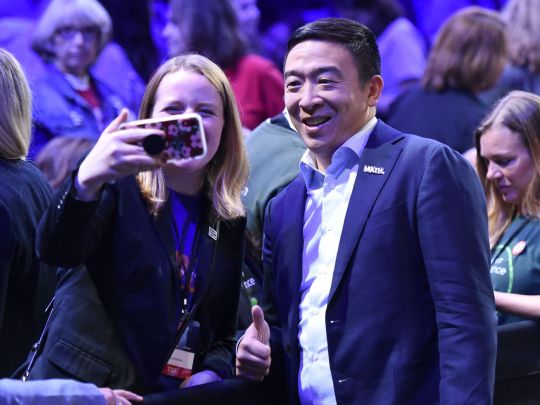
Andrew Yang poses for a selfie. | Ethan Miller/Getty Images
For politicians, the buzziest new social video app presents a risk and an opportunity.
In 2015, Hillary Clinton was “yas queening” all over the internet. She had an official Snapchat account with a “Yaaas, Hillary!” logo that was also a T-shirt, a posed #yas photo with the stars of Broad City, custom Hillary Bitmoji, ironic cross-stitch art, and other signifiers of “yas” culture that’s since become emblematic of a certain kind of blinkered white feminism. An attempt to reach millennials with a passing familiarity with stan culture, it was also an extremely strategy easy to mock. As Amanda Hess wrote at the time in Slate, “American culture does not exactly appreciate the image of the ‘authentic’ older woman, but boy does it hate the older woman who strains to stay relevant.”
Hillary Clinton lost the election. That fact certainly can’t be attributed solely to a social media voice that many criticized as insincere and pandering, but it had a lasting impact on the ways we expect politicians to behave online.
It also might offer a clue on why so few politicians have a presence on the buzziest social media app of the moment, TikTok. Since its US launch in August 2018, the short-form video app has exploded in popularity, having been downloaded more than a billion times in 2018 and boasting 27 million active American users as of February 2019. Both Facebook and Instagram have launched competitors (or clones, depending on whom you ask), and celebrities like Will Smith, Ariana Grande, Ed Sheeran, and Reese Witherspoon are now flocking to the app en masse.
Politicians, meanwhile, have been understandably hesitant to hop on board. Like all social media apps, TikTok has its own vernacular, and any transgressions of that shared language and sensibility stick out like, well, septuagenarian politicians on a social media app meant for teens. The fear of coming off as insincere or being flooded with “ok boomer” comments is a real one. The other outcome? A TikTok presence that fails to leave a mark, like Julian Castro’s account, which currently only has 470 followers.
Still, that leaves an opportunity. Enter: the TikTok account of an equally stodgy publication that has, against all odds, managed to feel truly native to the TikTok ecosystem. It’s the Washington Post’s, which since its debut this spring has amassed a quarter-million followers and a legion of superfans who praise its goofy premises and unserious tone. So far, three candidates — Andrew Yang, Beto O’Rourke, and Julian Castro — have appeared on it.
The Washington Post’s TikTok’s success is the direct result of its creator and biggest star, 28-year-old Dave Jorgenson, who previously created humor and satire videos for the newspaper. A scroll through the Washington Post’s TikTok account will show Dave making self-deprecating jokes about being an adult on the app, Dave occupying the role of “the TikTok guy” in meetings, Dave doing silly 15-second sketches with the paper’s fashion, gaming, and economics reporters.
Jorgenson attributes the growth and fanbase of the account to his spending two months watching and listening to videos on TikTok instead of rushing to quickly turn around content. “If you’re gonna launch anything, whether you’re a newspaper or a brand or a company, you need to understand the app, otherwise people will see right through you,” he says. “Especially on TikTok, because the whole thing is that it’s mostly just raw videos set to music.”
The Washington Post, however, has what regular TikTok users don’t: access to very important people. In October, 2020 Democratic presidential candidate Andrew Yang just happened to be scheduled to visit the Washington Post’s offices filming an unrelated segment when Jorgenson was able to strike a plan with Yang’s team about filming a TikTok.
Yang’s team was already a fan of the Post’s TikTok account; the campaign has also leaned heavily on the fact that he is a tech entrepreneur. “We didn’t really have to sell it to Andrew Yang,” says Jorgenson. “He was like, ‘If they think it’s great, I’m going to do it.’” It’s a particularly impressive feat considering the resulting video was actually poking fun at Yang’s low polling numbers. “Finally relaxing after a full day of interviews and meeting people,” reads the caption on the first segment, followed by “Still polling at 3 percent” against a backdrop of Yang dancing in celebration.
The paper has since done equally self-deprecating videos with both Beto O’Rourke, who ended his campaign on November 1, and Julian Castro, whose video was a play on how much he looks like his brother, Texas Rep. Joaquin Castro. All three videos took off, garnering between 40,000 and 400,000 likes.
Though neither Beto’s nor Castro’s team replied to a request for comment, Yang’s press secretary told Vox, “We’re constantly exploring ways to reach new audiences and voters, and the TikTok video with the Washington Post is certainly one of those ways.”
Since the election of Donald Trump proved politicians could tweet rambling, often nonsensical stream-of-consciousness sentences and still win over voters, politicians have approached social media with an increased candidness. New York Rep. Alexandria Ocasio-Cortez has posted her skin care routine to her Instagram stories; O’Rourke live-streamed his haircut; Elizabeth Warren posts videos of herself calling small-dollar donors to social media and makes a point to pose for every single person who wants a selfie after her town halls. In an age where we expect to be welcomed into the homes and lives of everyone we follow online, connecting with politicians has never felt so intimate.
Politicians have historically been pretty terrible at social media. A cursory glance at Mike Huckabee’s tweeting habits will illustrate as much — the former Arkansas governor and presidential candidate was once described by Fast Company as “the least funny person on Twitter.” Even cool-ish, young-ish presidential candidates are sometimes bad at tweeting. Cory Booker has made the same joke — a bit of PG-13 wordplay about coffee and sleep — 14 times over the past decade.
There are now more avenues than ever for politicians to embarrass themselves online. Instagram, for instance, has gained popularity among politicians faster than any other social media platform over the past few years, and was also the site of O’Rourke’s now-infamous live-streamed dentist appointment.
Aidan King, a senior strategist at Middle Seat consulting who has worked on presidential campaigns for both Bernie Sanders and O’Rourke, says that there’s a certain degree of apprehension in approaching any new social media platform. If candidates don’t know precisely who they’re speaking to, their message can be warped into something else. “There’s nothing worse for a political campaign than going viral for the wrong reasons,” he says.
TikTok, with its legions of irony-steeped teens, presents a specific danger. “The zoomers can be pretty ruthless, and it’s also clear which candidates they like a lot,” explains King. “Young people are really into Bernie Sanders, Andrew Yang, Elizabeth Warren, so I can understand why other candidates in the 2020 races just don’t really want to mess with [TikTok]. Joe Biden going on a platform that adores Bernie Sanders and Alexandria Ocasio-Cortez is a recipe for disaster. They know the audience well enough to know they wouldn’t really get along with the people there.”
The Washington Post’s TikTok, though, is a controlled environment where candidates have little to lose, even when the content is unlike anything a political PR team would have typically come up with. “There’s just this very positive feeling around TikTok. Even if they are self-deprecating, they’re pretty wholesome,” Jorgenson says. “While the text in front of Andrew Yang was deprecating, it’s very funny. How could that hurt you?”
Jorgenson hopes to get every 2020 Democratic candidate in a video and has reached out to multiple candidates, but there is one white whale in particular. “I think if we get Bernie, then we have done our job, because I don’t know how we’re going to. But I’d be very proud of myself,” he laughs.
There are concerns over TikTok’s ties to the Chinese government (its parent company Bytedance is based in Beijing) and its willingness to bow to conservative governments by censoring pro-LGBTQ content, but the app has always wanted its content to remain politics-free. It recently announced it would ban political advertising out of a desire to remain a “positive, refreshing environment.” While nothing is stopping politicians from using the app, they may be hesitant to engage with one that will soon be under investigation by the Committee on Foreign Investment in the United States.
It’s also likely it simply isn’t worth building a following on an app where a sizeable portion of its users aren’t even old enough to vote. For now, one-off sketches with the TikTok expert over at the Washington Post will do.
Sign up for The Goods’ newsletter. Twice a week, we’ll send you the best Goods stories exploring what we buy, why we buy it, and why it matters.
from Vox - All https://ift.tt/2ppxr5Y
0 notes
Text
How the Washington Post’s TikTok became an unofficial 2020 campaign stop
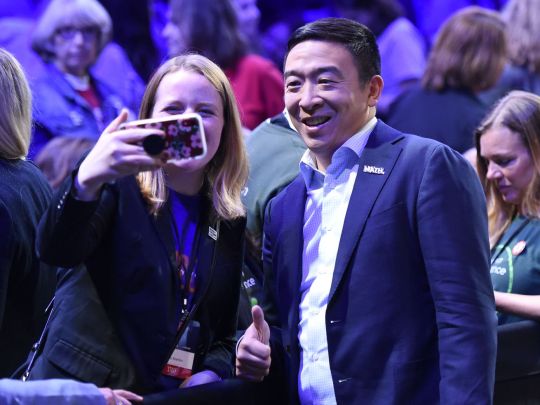
Andrew Yang poses for a selfie. | Ethan Miller/Getty Images
For politicians, the buzziest new social video app presents a risk and an opportunity.
In 2015, Hillary Clinton was “yas queening” all over the internet. She had an official Snapchat account with a “Yaaas, Hillary!” logo that was also a T-shirt, a posed #yas photo with the stars of Broad City, custom Hillary Bitmoji, ironic cross-stitch art, and other signifiers of “yas” culture that’s since become emblematic of a certain kind of blinkered white feminism. An attempt to reach millennials with a passing familiarity with stan culture, it was also an extremely strategy easy to mock. As Amanda Hess wrote at the time in Slate, “American culture does not exactly appreciate the image of the ‘authentic’ older woman, but boy does it hate the older woman who strains to stay relevant.”
Hillary Clinton lost the election. That fact certainly can’t be attributed solely to a social media voice that many criticized as insincere and pandering, but it had a lasting impact on the ways we expect politicians to behave online.
It also might offer a clue on why so few politicians have a presence on the buzziest social media app of the moment, TikTok. Since its US launch in August 2018, the short-form video app has exploded in popularity, having been downloaded more than a billion times in 2018 and boasting 27 million active American users as of February 2019. Both Facebook and Instagram have launched competitors (or clones, depending on whom you ask), and celebrities like Will Smith, Ariana Grande, Ed Sheeran, and Reese Witherspoon are now flocking to the app en masse.
Politicians, meanwhile, have been understandably hesitant to hop on board. Like all social media apps, TikTok has its own vernacular, and any transgressions of that shared language and sensibility stick out like, well, septuagenarian politicians on a social media app meant for teens. The fear of coming off as insincere or being flooded with “ok boomer” comments is a real one. The other outcome? A TikTok presence that fails to leave a mark, like Julian Castro’s account, which currently only has 470 followers.
Still, that leaves an opportunity. Enter: the TikTok account of an equally stodgy publication that has, against all odds, managed to feel truly native to the TikTok ecosystem. It’s the Washington Post’s, which since its debut this spring has amassed a quarter-million followers and a legion of superfans who praise its goofy premises and unserious tone. So far, three candidates — Andrew Yang, Beto O’Rourke, and Julian Castro — have appeared on it.
The Washington Post’s TikTok’s success is the direct result of its creator and biggest star, 28-year-old Dave Jorgenson, who previously created humor and satire videos for the newspaper. A scroll through the Washington Post’s TikTok account will show Dave making self-deprecating jokes about being an adult on the app, Dave occupying the role of “the TikTok guy” in meetings, Dave doing silly 15-second sketches with the paper’s fashion, gaming, and economics reporters.
Jorgenson attributes the growth and fanbase of the account to his spending two months watching and listening to videos on TikTok instead of rushing to quickly turn around content. “If you’re gonna launch anything, whether you’re a newspaper or a brand or a company, you need to understand the app, otherwise people will see right through you,” he says. “Especially on TikTok, because the whole thing is that it’s mostly just raw videos set to music.”
The Washington Post, however, has what regular TikTok users don’t: access to very important people. In October, 2020 Democratic presidential candidate Andrew Yang just happened to be scheduled to visit the Washington Post’s offices filming an unrelated segment when Jorgenson was able to strike a plan with Yang’s team about filming a TikTok.
Yang’s team was already a fan of the Post’s TikTok account; the campaign has also leaned heavily on the fact that he is a tech entrepreneur. “We didn’t really have to sell it to Andrew Yang,” says Jorgenson. “He was like, ‘If they think it’s great, I’m going to do it.’” It’s a particularly impressive feat considering the resulting video was actually poking fun at Yang’s low polling numbers. “Finally relaxing after a full day of interviews and meeting people,” reads the caption on the first segment, followed by “Still polling at 3 percent” against a backdrop of Yang dancing in celebration.
The paper has since done equally self-deprecating videos with both Beto O’Rourke, who ended his campaign on November 1, and Julian Castro, whose video was a play on how much he looks like his brother, Texas Rep. Joaquin Castro. All three videos took off, garnering between 40,000 and 400,000 likes.
Though neither Beto’s nor Castro’s team replied to a request for comment, Yang’s press secretary told Vox, “We’re constantly exploring ways to reach new audiences and voters, and the TikTok video with the Washington Post is certainly one of those ways.”
Since the election of Donald Trump proved politicians could tweet rambling, often nonsensical stream-of-consciousness sentences and still win over voters, politicians have approached social media with an increased candidness. New York Rep. Alexandria Ocasio-Cortez has posted her skin care routine to her Instagram stories; O’Rourke live-streamed his haircut; Elizabeth Warren posts videos of herself calling small-dollar donors to social media and makes a point to pose for every single person who wants a selfie after her town halls. In an age where we expect to be welcomed into the homes and lives of everyone we follow online, connecting with politicians has never felt so intimate.
Politicians have historically been pretty terrible at social media. A cursory glance at Mike Huckabee’s tweeting habits will illustrate as much — the former Arkansas governor and presidential candidate was once described by Fast Company as “the least funny person on Twitter.” Even cool-ish, young-ish presidential candidates are sometimes bad at tweeting. Cory Booker has made the same joke — a bit of PG-13 wordplay about coffee and sleep — 14 times over the past decade.
There are now more avenues than ever for politicians to embarrass themselves online. Instagram, for instance, has gained popularity among politicians faster than any other social media platform over the past few years, and was also the site of O’Rourke’s now-infamous live-streamed dentist appointment.
Aidan King, a senior strategist at Middle Seat consulting who has worked on presidential campaigns for both Bernie Sanders and O’Rourke, says that there’s a certain degree of apprehension in approaching any new social media platform. If candidates don’t know precisely who they’re speaking to, their message can be warped into something else. “There’s nothing worse for a political campaign than going viral for the wrong reasons,” he says.
TikTok, with its legions of irony-steeped teens, presents a specific danger. “The zoomers can be pretty ruthless, and it’s also clear which candidates they like a lot,” explains King. “Young people are really into Bernie Sanders, Andrew Yang, Elizabeth Warren, so I can understand why other candidates in the 2020 races just don’t really want to mess with [TikTok]. Joe Biden going on a platform that adores Bernie Sanders and Alexandria Ocasio-Cortez is a recipe for disaster. They know the audience well enough to know they wouldn’t really get along with the people there.”
The Washington Post’s TikTok, though, is a controlled environment where candidates have little to lose, even when the content is unlike anything a political PR team would have typically come up with. “There’s just this very positive feeling around TikTok. Even if they are self-deprecating, they’re pretty wholesome,” Jorgenson says. “While the text in front of Andrew Yang was deprecating, it’s very funny. How could that hurt you?”
Jorgenson hopes to get every 2020 Democratic candidate in a video and has reached out to multiple candidates, but there is one white whale in particular. “I think if we get Bernie, then we have done our job, because I don’t know how we’re going to. But I’d be very proud of myself,” he laughs.
There are concerns over TikTok’s ties to the Chinese government (its parent company Bytedance is based in Beijing) and its willingness to bow to conservative governments by censoring pro-LGBTQ content, but the app has always wanted its content to remain politics-free. It recently announced it would ban political advertising out of a desire to remain a “positive, refreshing environment.” While nothing is stopping politicians from using the app, they may be hesitant to engage with one that will soon be under investigation by the Committee on Foreign Investment in the United States.
It’s also likely it simply isn’t worth building a following on an app where a sizeable portion of its users aren’t even old enough to vote. For now, one-off sketches with the TikTok expert over at the Washington Post will do.
Sign up for The Goods’ newsletter. Twice a week, we’ll send you the best Goods stories exploring what we buy, why we buy it, and why it matters.
from Vox - All https://ift.tt/2ppxr5Y
0 notes
Text
How the Washington Post’s TikTok became an unofficial 2020 campaign stop
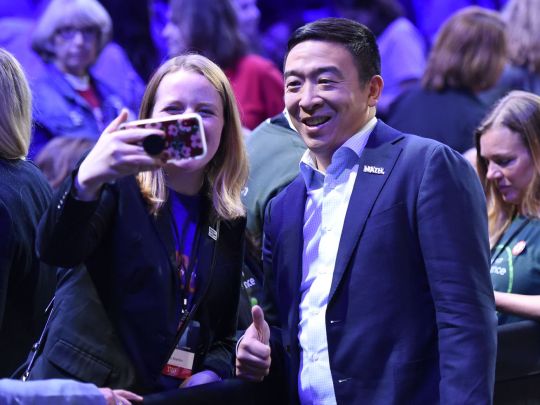
Andrew Yang poses for a selfie. | Ethan Miller/Getty Images
For politicians, the buzziest new social video app presents a risk and an opportunity.
In 2015, Hillary Clinton was “yas queening” all over the internet. She had an official Snapchat account with a “Yaaas, Hillary!” logo that was also a T-shirt, a posed #yas photo with the stars of Broad City, custom Hillary Bitmoji, ironic cross-stitch art, and other signifiers of “yas” culture that’s since become emblematic of a certain kind of blinkered white feminism. An attempt to reach millennials with a passing familiarity with stan culture, it was also an extremely strategy easy to mock. As Amanda Hess wrote at the time in Slate, “American culture does not exactly appreciate the image of the ‘authentic’ older woman, but boy does it hate the older woman who strains to stay relevant.”
Hillary Clinton lost the election. That fact certainly can’t be attributed solely to a social media voice that many criticized as insincere and pandering, but it had a lasting impact on the ways we expect politicians to behave online.
It also might offer a clue on why so few politicians have a presence on the buzziest social media app of the moment, TikTok. Since its US launch in August 2018, the short-form video app has exploded in popularity, having been downloaded more than a billion times in 2018 and boasting 27 million active American users as of February 2019. Both Facebook and Instagram have launched competitors (or clones, depending on whom you ask), and celebrities like Will Smith, Ariana Grande, Ed Sheeran, and Reese Witherspoon are now flocking to the app en masse.
Politicians, meanwhile, have been understandably hesitant to hop on board. Like all social media apps, TikTok has its own vernacular, and any transgressions of that shared language and sensibility stick out like, well, septuagenarian politicians on a social media app meant for teens. The fear of coming off as insincere or being flooded with “ok boomer” comments is a real one. The other outcome? A TikTok presence that fails to leave a mark, like Julian Castro’s account, which currently only has 470 followers.
Still, that leaves an opportunity. Enter: the TikTok account of an equally stodgy publication that has, against all odds, managed to feel truly native to the TikTok ecosystem. It’s the Washington Post’s, which since its debut this spring has amassed a quarter-million followers and a legion of superfans who praise its goofy premises and unserious tone. So far, three candidates — Andrew Yang, Beto O’Rourke, and Julian Castro — have appeared on it.
The Washington Post’s TikTok’s success is the direct result of its creator and biggest star, 28-year-old Dave Jorgenson, who previously created humor and satire videos for the newspaper. A scroll through the Washington Post’s TikTok account will show Dave making self-deprecating jokes about being an adult on the app, Dave occupying the role of “the TikTok guy” in meetings, Dave doing silly 15-second sketches with the paper’s fashion, gaming, and economics reporters.
Jorgenson attributes the growth and fanbase of the account to his spending two months watching and listening to videos on TikTok instead of rushing to quickly turn around content. “If you’re gonna launch anything, whether you’re a newspaper or a brand or a company, you need to understand the app, otherwise people will see right through you,” he says. “Especially on TikTok, because the whole thing is that it’s mostly just raw videos set to music.”
The Washington Post, however, has what regular TikTok users don’t: access to very important people. In October, 2020 Democratic presidential candidate Andrew Yang just happened to be scheduled to visit the Washington Post’s offices filming an unrelated segment when Jorgenson was able to strike a plan with Yang’s team about filming a TikTok.
Yang’s team was already a fan of the Post’s TikTok account; the campaign has also leaned heavily on the fact that he is a tech entrepreneur. “We didn’t really have to sell it to Andrew Yang,” says Jorgenson. “He was like, ‘If they think it’s great, I’m going to do it.’” It’s a particularly impressive feat considering the resulting video was actually poking fun at Yang’s low polling numbers. “Finally relaxing after a full day of interviews and meeting people,” reads the caption on the first segment, followed by “Still polling at 3 percent” against a backdrop of Yang dancing in celebration.
The paper has since done equally self-deprecating videos with both Beto O’Rourke, who ended his campaign on November 1, and Julian Castro, whose video was a play on how much he looks like his brother, Texas Rep. Joaquin Castro. All three videos took off, garnering between 40,000 and 400,000 likes.
Though neither Beto’s nor Castro’s team replied to a request for comment, Yang’s press secretary told Vox, “We’re constantly exploring ways to reach new audiences and voters, and the TikTok video with the Washington Post is certainly one of those ways.”
Since the election of Donald Trump proved politicians could tweet rambling, often nonsensical stream-of-consciousness sentences and still win over voters, politicians have approached social media with an increased candidness. New York Rep. Alexandria Ocasio-Cortez has posted her skin care routine to her Instagram stories; O’Rourke live-streamed his haircut; Elizabeth Warren posts videos of herself calling small-dollar donors to social media and makes a point to pose for every single person who wants a selfie after her town halls. In an age where we expect to be welcomed into the homes and lives of everyone we follow online, connecting with politicians has never felt so intimate.
Politicians have historically been pretty terrible at social media. A cursory glance at Mike Huckabee’s tweeting habits will illustrate as much — the former Arkansas governor and presidential candidate was once described by Fast Company as “the least funny person on Twitter.” Even cool-ish, young-ish presidential candidates are sometimes bad at tweeting. Cory Booker has made the same joke — a bit of PG-13 wordplay about coffee and sleep — 14 times over the past decade.
There are now more avenues than ever for politicians to embarrass themselves online. Instagram, for instance, has gained popularity among politicians faster than any other social media platform over the past few years, and was also the site of O’Rourke’s now-infamous live-streamed dentist appointment.
Aidan King, a senior strategist at Middle Seat consulting who has worked on presidential campaigns for both Bernie Sanders and O’Rourke, says that there’s a certain degree of apprehension in approaching any new social media platform. If candidates don’t know precisely who they’re speaking to, their message can be warped into something else. “There’s nothing worse for a political campaign than going viral for the wrong reasons,” he says.
TikTok, with its legions of irony-steeped teens, presents a specific danger. “The zoomers can be pretty ruthless, and it’s also clear which candidates they like a lot,” explains King. “Young people are really into Bernie Sanders, Andrew Yang, Elizabeth Warren, so I can understand why other candidates in the 2020 races just don’t really want to mess with [TikTok]. Joe Biden going on a platform that adores Bernie Sanders and Alexandria Ocasio-Cortez is a recipe for disaster. They know the audience well enough to know they wouldn’t really get along with the people there.”
The Washington Post’s TikTok, though, is a controlled environment where candidates have little to lose, even when the content is unlike anything a political PR team would have typically come up with. “There’s just this very positive feeling around TikTok. Even if they are self-deprecating, they’re pretty wholesome,” Jorgenson says. “While the text in front of Andrew Yang was deprecating, it’s very funny. How could that hurt you?”
Jorgenson hopes to get every 2020 Democratic candidate in a video and has reached out to multiple candidates, but there is one white whale in particular. “I think if we get Bernie, then we have done our job, because I don’t know how we’re going to. But I’d be very proud of myself,” he laughs.
There are concerns over TikTok’s ties to the Chinese government (its parent company Bytedance is based in Beijing) and its willingness to bow to conservative governments by censoring pro-LGBTQ content, but the app has always wanted its content to remain politics-free. It recently announced it would ban political advertising out of a desire to remain a “positive, refreshing environment.” While nothing is stopping politicians from using the app, they may be hesitant to engage with one that will soon be under investigation by the Committee on Foreign Investment in the United States.
It’s also likely it simply isn’t worth building a following on an app where a sizeable portion of its users aren’t even old enough to vote. For now, one-off sketches with the TikTok expert over at the Washington Post will do.
Sign up for The Goods’ newsletter. Twice a week, we’ll send you the best Goods stories exploring what we buy, why we buy it, and why it matters.
from Vox - All https://ift.tt/2ppxr5Y
0 notes
Text
How the Washington Post’s TikTok became an unofficial 2020 campaign stop
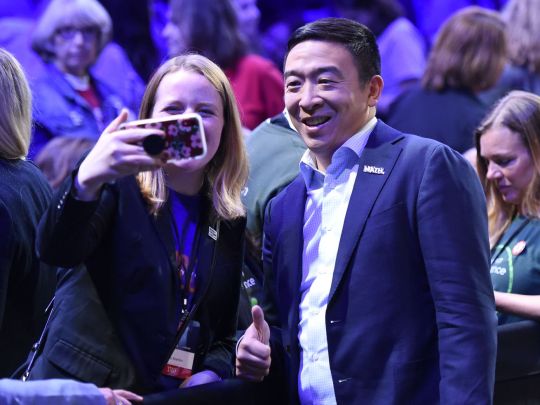
Andrew Yang poses for a selfie. | Ethan Miller/Getty Images
For politicians, the buzziest new social video app presents a risk and an opportunity.
In 2015, Hillary Clinton was “yas queening” all over the internet. She had an official Snapchat account with a “Yaaas, Hillary!” logo that was also a T-shirt, a posed #yas photo with the stars of Broad City, custom Hillary Bitmoji, ironic cross-stitch art, and other signifiers of “yas” culture that’s since become emblematic of a certain kind of blinkered white feminism. An attempt to reach millennials with a passing familiarity with stan culture, it was also an extremely strategy easy to mock. As Amanda Hess wrote at the time in Slate, “American culture does not exactly appreciate the image of the ‘authentic’ older woman, but boy does it hate the older woman who strains to stay relevant.”
Hillary Clinton lost the election. That fact certainly can’t be attributed solely to a social media voice that many criticized as insincere and pandering, but it had a lasting impact on the ways we expect politicians to behave online.
It also might offer a clue on why so few politicians have a presence on the buzziest social media app of the moment, TikTok. Since its US launch in August 2018, the short-form video app has exploded in popularity, having been downloaded more than a billion times in 2018 and boasting 27 million active American users as of February 2019. Both Facebook and Instagram have launched competitors (or clones, depending on whom you ask), and celebrities like Will Smith, Ariana Grande, Ed Sheeran, and Reese Witherspoon are now flocking to the app en masse.
Politicians, meanwhile, have been understandably hesitant to hop on board. Like all social media apps, TikTok has its own vernacular, and any transgressions of that shared language and sensibility stick out like, well, septuagenarian politicians on a social media app meant for teens. The fear of coming off as insincere or being flooded with “ok boomer” comments is a real one. The other outcome? A TikTok presence that fails to leave a mark, like Julian Castro’s account, which currently only has 470 followers.
Still, that leaves an opportunity. Enter: the TikTok account of an equally stodgy publication that has, against all odds, managed to feel truly native to the TikTok ecosystem. It’s the Washington Post’s, which since its debut this spring has amassed a quarter-million followers and a legion of superfans who praise its goofy premises and unserious tone. So far, three candidates — Andrew Yang, Beto O’Rourke, and Julian Castro — have appeared on it.
The Washington Post’s TikTok’s success is the direct result of its creator and biggest star, 28-year-old Dave Jorgenson, who previously created humor and satire videos for the newspaper. A scroll through the Washington Post’s TikTok account will show Dave making self-deprecating jokes about being an adult on the app, Dave occupying the role of “the TikTok guy” in meetings, Dave doing silly 15-second sketches with the paper’s fashion, gaming, and economics reporters.
Jorgenson attributes the growth and fanbase of the account to his spending two months watching and listening to videos on TikTok instead of rushing to quickly turn around content. “If you’re gonna launch anything, whether you’re a newspaper or a brand or a company, you need to understand the app, otherwise people will see right through you,” he says. “Especially on TikTok, because the whole thing is that it’s mostly just raw videos set to music.”
The Washington Post, however, has what regular TikTok users don’t: access to very important people. In October, 2020 Democratic presidential candidate Andrew Yang just happened to be scheduled to visit the Washington Post’s offices filming an unrelated segment when Jorgenson was able to strike a plan with Yang’s team about filming a TikTok.
Yang’s team was already a fan of the Post’s TikTok account; the campaign has also leaned heavily on the fact that he is a tech entrepreneur. “We didn’t really have to sell it to Andrew Yang,” says Jorgenson. “He was like, ‘If they think it’s great, I’m going to do it.’” It’s a particularly impressive feat considering the resulting video was actually poking fun at Yang’s low polling numbers. “Finally relaxing after a full day of interviews and meeting people,” reads the caption on the first segment, followed by “Still polling at 3 percent” against a backdrop of Yang dancing in celebration.
The paper has since done equally self-deprecating videos with both Beto O’Rourke, who ended his campaign on November 1, and Julian Castro, whose video was a play on how much he looks like his brother, Texas Rep. Joaquin Castro. All three videos took off, garnering between 40,000 and 400,000 likes.
Though neither Beto’s nor Castro’s team replied to a request for comment, Yang’s press secretary told Vox, “We’re constantly exploring ways to reach new audiences and voters, and the TikTok video with the Washington Post is certainly one of those ways.”
Since the election of Donald Trump proved politicians could tweet rambling, often nonsensical stream-of-consciousness sentences and still win over voters, politicians have approached social media with an increased candidness. New York Rep. Alexandria Ocasio-Cortez has posted her skin care routine to her Instagram stories; O’Rourke live-streamed his haircut; Elizabeth Warren posts videos of herself calling small-dollar donors to social media and makes a point to pose for every single person who wants a selfie after her town halls. In an age where we expect to be welcomed into the homes and lives of everyone we follow online, connecting with politicians has never felt so intimate.
Politicians have historically been pretty terrible at social media. A cursory glance at Mike Huckabee’s tweeting habits will illustrate as much — the former Arkansas governor and presidential candidate was once described by Fast Company as “the least funny person on Twitter.” Even cool-ish, young-ish presidential candidates are sometimes bad at tweeting. Cory Booker has made the same joke — a bit of PG-13 wordplay about coffee and sleep — 14 times over the past decade.
There are now more avenues than ever for politicians to embarrass themselves online. Instagram, for instance, has gained popularity among politicians faster than any other social media platform over the past few years, and was also the site of O’Rourke’s now-infamous live-streamed dentist appointment.
Aidan King, a senior strategist at Middle Seat consulting who has worked on presidential campaigns for both Bernie Sanders and O’Rourke, says that there’s a certain degree of apprehension in approaching any new social media platform. If candidates don’t know precisely who they’re speaking to, their message can be warped into something else. “There’s nothing worse for a political campaign than going viral for the wrong reasons,” he says.
TikTok, with its legions of irony-steeped teens, presents a specific danger. “The zoomers can be pretty ruthless, and it’s also clear which candidates they like a lot,” explains King. “Young people are really into Bernie Sanders, Andrew Yang, Elizabeth Warren, so I can understand why other candidates in the 2020 races just don’t really want to mess with [TikTok]. Joe Biden going on a platform that adores Bernie Sanders and Alexandria Ocasio-Cortez is a recipe for disaster. They know the audience well enough to know they wouldn’t really get along with the people there.”
The Washington Post’s TikTok, though, is a controlled environment where candidates have little to lose, even when the content is unlike anything a political PR team would have typically come up with. “There’s just this very positive feeling around TikTok. Even if they are self-deprecating, they’re pretty wholesome,” Jorgenson says. “While the text in front of Andrew Yang was deprecating, it’s very funny. How could that hurt you?”
Jorgenson hopes to get every 2020 Democratic candidate in a video and has reached out to multiple candidates, but there is one white whale in particular. “I think if we get Bernie, then we have done our job, because I don’t know how we’re going to. But I’d be very proud of myself,” he laughs.
There are concerns over TikTok’s ties to the Chinese government (its parent company Bytedance is based in Beijing) and its willingness to bow to conservative governments by censoring pro-LGBTQ content, but the app has always wanted its content to remain politics-free. It recently announced it would ban political advertising out of a desire to remain a “positive, refreshing environment.” While nothing is stopping politicians from using the app, they may be hesitant to engage with one that will soon be under investigation by the Committee on Foreign Investment in the United States.
It’s also likely it simply isn’t worth building a following on an app where a sizeable portion of its users aren’t even old enough to vote. For now, one-off sketches with the TikTok expert over at the Washington Post will do.
Sign up for The Goods’ newsletter. Twice a week, we’ll send you the best Goods stories exploring what we buy, why we buy it, and why it matters.
from Vox - All https://ift.tt/2ppxr5Y
0 notes
Text
19 Reasons Buzzfeed Should Employ Sophie Jackson (#13 is questionable)
1. I write every day of my life. Yes, even when I’m not being paid for it.
My whole life is basically just an endless series of things I become passionate about. How do I express these passions? I write about them - at great lengths, and with a lot of enthusiasm.

2. I’m your target market.
To attract a Buzzfeed key demographic, one most think like a Buzzfeed key demographic.
Obviously the appeal of pop culture bulletins and informative listicles is fairly universal. Your typical reader, however, is the Western millennial spending their coffee break glued to a smartphone, and I fit in there quite comfortably.

3. There is not a meme that eludes me.
In most job applications, this wouldn’t really be the kind of quality one boasts about. Spending every spare moment browsing Reddit, Tumblr and Twitter might not be the coolest of hobbies, but it does mean the I see practically every meme that comes into existence - however short-lived, however nonsensical.
And I’m not just talking about viral memes. Those alternative memes one only discovers when browsing the dark corners of Tumblr at 3am? I see them. I know them. I know them all. If anyone’s gonna earn a job at Buzzfeed solely for their meme expertise...
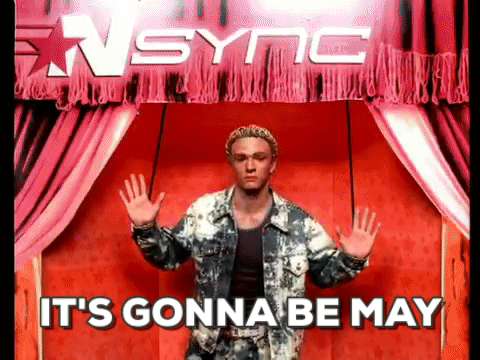
4. I’m extremely flexible.
No - I’m not just talking about my enviable yoga postures. I adapt to new environments like a Victoria Secret model adapts to the latest fad diet. Whether you need me to travel, stay put, work weekends or switch between tasks - it’s all fine by me.
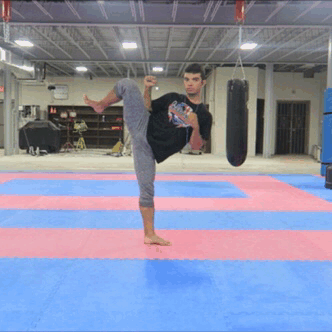
5. I’m as familiar with past pop culture as I am with contemporary pop culture.
From The Bell Jar to The Fault in Our Stars, from Pissaro to Koons, from Blackadder to It’s Always Sunny in Philadelphia - I spend as much time obsessing over past icons as I do over today’s hottest releases. Good pop culture tends to remain relevant, so for every American Idol episode I've seen, I’ve watched just as many Top of the Pops re-runs. Whether you want me to cover David Bowie or Beyonce, I’m just as happy either way.
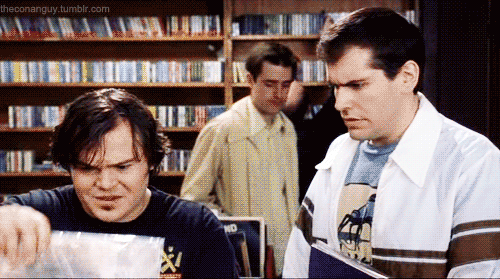
6. I have live reporting and interviewing experience.
I’ve professionally and confidently conducted interviews with a number of high profile figures including representatives of global charities, industry leaders, social media influencers and world league professional poker players. In the past two years I’ve also gained experience reporting at live sports events watched by thousands.
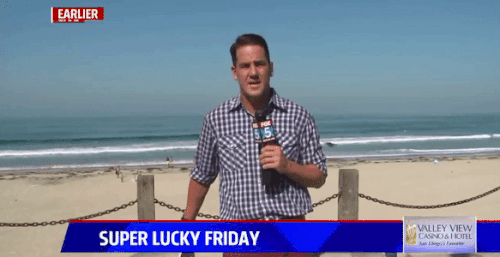
7. I know a thing or two about SEO.
Just kidding, I know like twenty things about SEO. Whether it’s in relation to social media marketing campaigns or the optimization of home page navigation, this is the field I’ve known from the earliest days of my career.
I could tell you, for example, the most competitive keywords for whatever you’re promoting. I can point you to the latest Google updates and explain what they mean for content strategy and link acquisition. My SEO crush is Rand Fishkin, and I know what Matt Cutt’s dinosaur impression looks like.
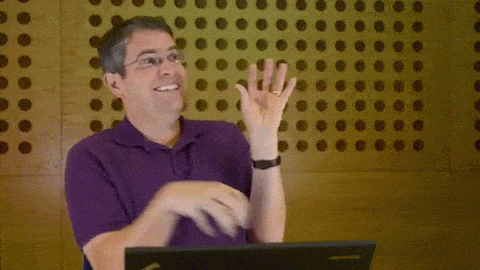
8. I’m a meticulous editor and fact-checker.
Living in what is becoming known as a ‘post-truth’ society of misinformation and fake news, impartial and factual journalism is as essential as ever.
Even if written with a light-hearted tone or for entertainment purposes, I believe there’s rarely a publication that is justified in foregoing thorough fact-checks.
As such, it has become second nature for me to cross-reference, double-check, triple-source and provide ample citations for anything I write. In short, I do not take lightly the responsibility that comes with producing content for an internationally respected brand.
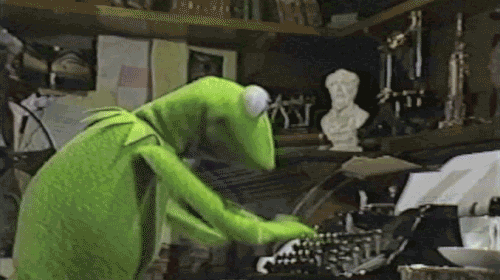
9. I’m not one to shy from politics.
And in this current political climate, one doesn’t really have the luxury of staying quiet. I appreciate the importance of delivering criticism and drawing attention to issues in a respectful manner that helps create productive debate and engagement.
With an education in UK politics, US politics, modern political history and Western political theory - I write about political matters with confidence and passion. If there’s one thing Buzzfeed does well (and Buzzfeed does several things well), it’s presenting a light-hearted and accessible examination of complex issues at a time when such media is especially needed.
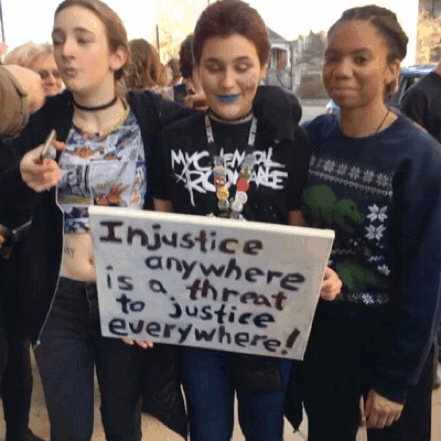
10. I’m totally comfortable writing in whatever style a piece of content calls for.
My experience in writing has been varied and far-spanning. I believe this to be useful, in that appropriately repurposing content for different platforms while maintaining consistency in tone is now a necessity for any online brand marketing.
My thorough grasp of the English language is one of many reasons I am highly qualified to undertake this task. Whether you want a blog post, informative review, promotional copy, argumentative op-ed or journalistic analysis - I can adapt my editorial style accordingly. One moment I can be writing a political take for The Hill, the next moment I’m focused on comparing Jeff Goldblum to pasta for The Reductress.

11. I’ve spent the last three years writing articles on every subject under the sun.
From beauty guides to morbid crimes to album releases to terrifying advancements of artificial intelligence - there’s not a subject I won’t or can’t write about.
‘Research’ is my middle name. I didn’t always know a lot about Bitcoins, Bill Clinton’s diet or Niagara Falls - but when my job calls for me to research something, I’m going to be an expert by the time I put pen to paper...or fingers to keyboard.
That being said - there are some subjects on which I am especially well-versed, and therefore love writing about the most. These subjects include, but are not limited to, intersectional feminism, contemporary art, modern history, animal welfare, mental health, science fiction, alternative fashion and classic rock.
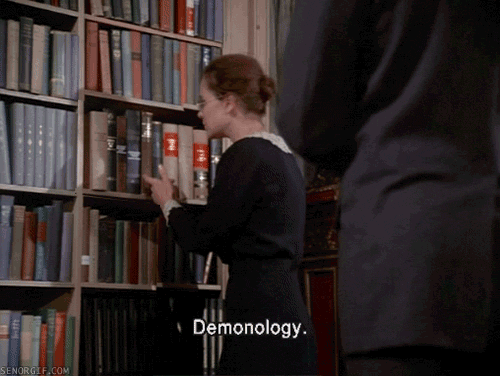
12. I’m on the lookout.
I have an eye for interesting stories and upcoming trends. My mornings are defined by two activities in particular; 1) drinking coffee with obscene amounts of sugar, and 2) checking the BBC, The Guardian, The Verge, ThinkProgress, Buzzfeed, ATTN:, Vox, The Washington Post and a bunch of other cutting-edge news publications. Not only do I stay-up-to-date, but I know how to translate news into clickable, shareable and relatable content that gets people commenting.
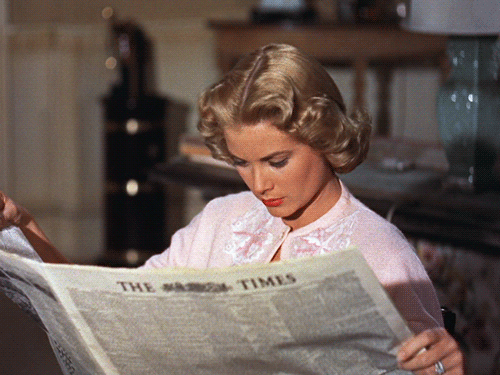
13. I bake the most divine Victoria Sponge cake and would bring it into the office.
“Feast upon my creation, colleagues” is something I would not say because that is weird.
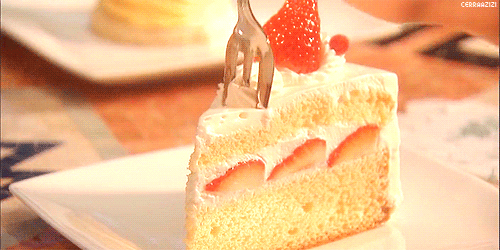
14. I’ve done a fair bit of travelling.
Globetrotting is an interest that has taken me from the coffee shops of Amsterdam and cathedrals of Rome to the forests of Sweden and beaches of California. A global perspective is important when writing for a global platform, and I believe my travel experiences will enrich what I can contribute to Buzzfeed.

15. I’m a quick learner.
There’s no doubt I’ve still got a lot to learn. Fortunately, I pick up most things quickly and have no problem putting aside extra time for studying should I lack any particular experience or know-how when it comes to my career. I would like to improve my GIF making game, Photoshop abilities and a couple of other mostly self-taught skills. Buzzfeed seems like the kind of environment to facilitate that growth and development.
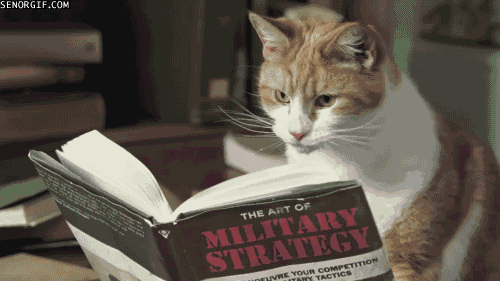
16. I’m a closeted Yankophile.
Yes, I may devour crumpets and Earl Grey tea for breakfast, but deep down there’s a part of me that just wants to live my life like an American hipster in an innocuous coming-of-age comedy. I grew up on a diet of American TV and literature, so writing for an American audience comes as naturally to me as writing for British readers.

17. I pride myself on being a good colleague.
Respect, positivity and open-mindedness - those are the principles I believe underline a healthy work environment.
I perform equally well in a team as I do independently. My management experience has taught me how to recognize and encourage my colleagues’ strongest traits, while giving them a space in which they can feel heard and supported.
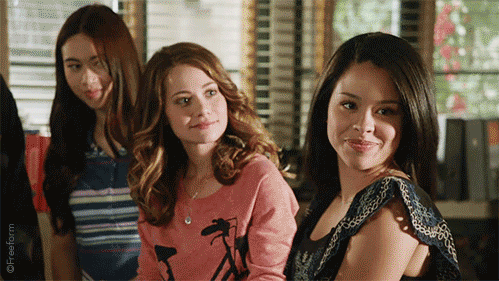
18. London is one of my favourite places in the whole world.
Why does that make me an ideal candidate? Well, in a way my love for London is irrelevant - except that my excitement over living in the coolest city on earth will probably manifest itself in the form of a big smile each morning. I’d be over the moon if I could relocate to that rainy hub of art galleries, innovative music scenes, cultural merging, vintage street markets and lush city parks.
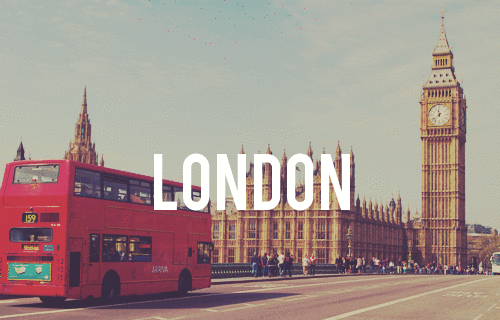
19. I aim for excellence.
If there’s a sentence you’ll never hear me say, it’s “that’s not in my job description”. I genuinely enjoy pushing myself and always aim to impress. No matter what project is at hand - I won’t stop until I’ve put my 100% into the job. If I work for you, you can rest assured you have a driven, reliable and problem-solving employee at force.

6 notes
·
View notes
Link
I’m standing in a piteous rain, in front of an auto garage on Flushing Avenue, staring across the street at a line of people that stretches back at least two full avenues. The mechanics standing behind me are idly curious: “What the hell is going on over there?”
I kind of think that if I started to try to explain it, I’d grow old and die on this street corner.
Hypefest, which takes place the same weekend as the New Yorker Festival and New York Comic Con, is a two-day streetwear celebration featuring art, music, food, and, of course, shopping. Hosted throughout several large, vaguely fish-scented buildings in the currently hip Brooklyn Navy Yard, it’s the first large-scale festival organized by the Hong Kong-based media and e-commerce giant Hypebeast, founded by Kevin Ma in 2005. And it’s an answer to ComplexCon, the glorified mall and music festival hosted by the “youth culture” media monolith Complex in Long Beach, California, every November.
Both celebrate the ever-growing online “hype” culture around anything exciting — Elon Musk and the modern commercial space race; basketball sneakers and a handful of famous men in hip-hop; startup streetwear brands and the legendary fashion houses that embrace them. Surprise and unlikeliness are key, which is why this crew loves loose-cannon tech CEOs as much as they love Kanye West, and also as much as they love bizarre collaborations like Balenciaga and Crocs or Louis Vuitton and Supreme.
Note a tiny hypebeast in an Adidas tracksuit. And, in the distance, a yacht Hypefest attendees can sign up to stand on. Kaitlyn Tiffany/Vox
Hypefest was barely announced, save for some Instagram posts last month and an 800-word New York Times preview titled “If you hype it, will they come?” Tickets weren’t made available until three weeks in advance, at which time Ma wrote on his Instagram, “Culture and learning shouldn’t have a price attached to it. I will personally cover the cost of tickets to make Hypefest a free experience for all.”
He gave out 10,000 free tickets in a matter of minutes.
The location of the festival was kept a secret until two days before, at which time it was announced only to ticket holders. The requisite Hypefest app, also usable only to ticket holders, hosted an elaborate digital store, which was the only way to buy anything you saw at the event. There was no cash allowed ��� even food trucks and the several enormous Ciroc stations weren’t permitted to take anything but credit cards or Apple Pay.
All these measures seem dramatic but were presumably necessary, given that the culture we’re talking about is one literally named for its excess energy and known for ambitious, flagrantly ridiculous resale scams. Also its high percentage of young male fans.
The location of Hypefest was kept a secret until two days before
Of the many things available for sale at Hypefest, a $1,700 suitcase is the most coveted. It’s making an exclusive debut at the festival, and it’s the reason many of these people got out of bed this morning.
For example: Axel, 15, and Chris, 14, a pair of incredibly polite friends who drove up from Washington, DC, with their parents. They are wearing Comme des Garçons Nikes and 2011 Jordan 1s, respectively; they tell me they came to Hypefest for the experience, and to buy two of the suitcases.
Other stuff sells out — notably, freeze-dried flowers preserved in glass blocks by Japanese artist Azuma Makoto (ranging from $260 to $600), and tactical vests from Pharrell Williams’s Billionaire Boys Club, which go for $1,100 each. But it’s the suitcase, a collaboration between Off-White (the Italian brand founded by Kanye West creative director Virgil Abloh) and Rimowa (a fancy German luggage company, majority-owned by LVMH), that’s the talk of the party.
The suitcase sells out immediately, but no worries — every couple of hours, it gets restocked, which festivalgoers are alerted to by a push notification. Each time, it sells out again about two minutes later. This happens at least five times.
The setting for Hypebeast’s first festival was a smattering of fish-scented buildings owned by the Brooklyn Fish Transfer. Kaitlyn Tiffany/Vox
Before I asked if I could go to Hypefest, I told my editor, “I think I love the hypebeasts. At least they’re getting excited. At least someone’s having an adrenaline rush.” If that’s true, it must be a behind-the-computer state of play. Everyone in line for the first round of shuttle buses to the navy yard on Saturday looks like they’d rather chew gravel than smile. (The buses are also effectively crowd control, serving no real crucial transportation purpose, as each group travels about 800 feet in them and there are no return buses.)
My first order of business upon disembarking the “shuttle bus” is not buying a $1,700 suitcase, but waiting in a small corral in order to meet the extremely famous young person Jaden Smith, who is announcing a denim line made in collaboration with the Dutch brand G-Star. Standing in the corral for 40 minutes, I am not permitted to leave to go to the bathroom, but I am permitted to look around my immediate vicinity.
Everybody is tall and wearing all black, except a baby wearing a camouflage Bape hoodie. Lots of people are pausing to take a picture of the back of a bald guy’s neck as he peruses Lacoste polos — probably because he has a tattoo there, of a pair of eyes, that looks suspiciously similar to Zayn Malik’s tattoo of Gigi Hadid’s eyes. All clothes are designer, unless they’re Scarface T-shirts or hoodies from the famed Atlanta strip club Magic City. It doesn’t immediately seem like anyone’s that cool, but I can concede they’re all cooler than me.
A fashion reporter, also stationed in the corral, looks down at my chunky white sneakers — relatively new but already slightly scuffed, modeled extremely vaguely after the current trend of designing shoes to look like swollen lips — and asks, “So what are those?”
“They’re from Target!” I say, throwing my arms wide like I’m Betty Draper about to show off a serving tray of Heineken. I hope it will be funnier than it is.
Ten minutes later, Jaden Smith — son of Will Smith, star of Netflix’s Neo Yokio, general presence in hip-hop — arrives to introduce his denim collection wearing what I can only guess is about 50 pounds of (mostly denim) clothing. Denim jacket, denim pants. He has both a fanny pack and a tactical vest, and though I can’t really get close enough to see, it seems like he’s not using all this storage space for anything in particular.
Outside our admittedly not-very-private corral, dozens of teens and 20-somethings press in and reach for his hand. Smith gives it. He smiles a glittery famous person smile. “We got floating mannequins inside; it’s gonna be awesome,” he tells the general air, seeming genuinely friendly and enthused, bouncing either because he is happy or because that is how you have to move if you are a tiny boy-wire inside enough fabric to cover a grizzly bear.
Jaden Smith poses with a fan at Hypefest, inside the G-Star booth. Kaitlyn Tiffany/Vox
He leads us into a conical structure I am hoping is not actually supposed to be a teepee and points up at three headless mannequins, suspended by invisible cords. They are wearing denim. The denim, it is explained, is sustainable. Some of it is undyed; some of it is dyed with indigo that doesn’t use salt; all of it uses less water than other denim.
“We have floating mannequins that are flying, because we want them to fly,” Smith explains. “G-Star clothes give you superpowers.” He turns to someone from G-Star and says, “The floating’s great. The floating’s great.” He explains that sustainability is important to him, and I believe him. I look at him for a few minutes longer than I feel I want to, because it just seems like what you should do if there’s a celebrity a few feet away and he’s thanked you for coming.
After I’ve touched raw denim, I wander outside, past the main stage where about two dozen boys are attempting to mosh to a DJ playing the Killers’ “Mr. Brightside,” and talk to a man waiting in line for empanadas. He points suddenly to my chest and says, “What is that?” That is a 3-inch-tall teddy bear holding an orange leaf. I remember that I bought it for 50 cents at the flea market in Avon, New York, last weekend, and that I pinned to the lapel of my stained Topshop jacket more or less as a joke.
“So you’d be making a 10,000 percent profit if you sold it to me right now for $5?” the man says. I think he’s joking, so I laugh, and then he says he’ll also buy me an empanada. I say something weird about how I’m “just getting acquainted” with my bear, I’ve only had him for one week, I don’t know if I need $5 that badly. “I mean, I know I’m a journalist, but it’s not that dire today,” I tell him, and he says the empanadas are really good. His friend, who is wearing an Endxiety hat reading “Our Lord & Savior Elon Musk,” tells him to please give up, I’m not parting with it.
It will take me close to 48 hours to realize that I wrote the man’s name down wrong and he’s Rhuigi Villaseñor, the 26-year-old owner of Rhude, an (extremely expensive!) LA streetwear label best known for the fact that Frank Ocean, Kendrick Lamar, and LeBron James wear it.
Anyway, he is really nice. He’s here to help launch a new sneaker with Puma. He tells me, “It’s great for the culture to be social, because it’s an Instagram world. It’s good for kids to be socializing who are, in one way or another, a little awkward.” I say, “Do you think they’re socializing?”
He says, “No.”
Rhude designer Rhuigi Villaseñor drinking a Sprite at Hypefest. Kaitlyn Tiffany/Vox Adidas’s booth at Hypfest, where attendees could sign up to create their own “never built” shoe. Kaitlyn Tiffany/Vox
It’s sort of a rhetorical question, as I can already see that they mostly aren’t. The thing about an event designed to educate you about expensive goods, I reason, is that the expensive goods are the education in and of themselves. You don’t need to hear explanations of them. You don’t need to hear outside opinions. A pair of sneakers being sold for $350 is worth $350, and probably more once there aren’t any left. I’m happy enough with this explanation — who doesn’t want a hobby that’s as simple as arithmetic and supply and demand?
Hypefest is a beautiful mall, essentially two dozen Instagram-ready stations for brands that don’t often appear outside of Instagram. Everybody is a walking price tag, and doing the math is as easy as a Google search on the free, ubiquitous wifi. The air is thick with humidity and money: Women wear ground-length Opening Ceremony raincoats, Prada fanny packs, Helmut Lang sweatshirts, Balenciaga sneakers, and vintage Apple employee jackets that go for around $400 on eBay. Men are in Off-White Nikes with the tags still on, Supreme hoodies, Anti-Social Social Club windbreakers, and Advisory Board Crystals beanies that are about $200 each on the popular resale app Grailed.
Jake Woloshin, 23, is wearing Ava Nirui’s Marc Jacobs hoodie (advertised as an “official bootleg,” which … okay), which means he is currently wearing $125 on his torso. But he tells me he couldn’t resist the new Heron Preston hoodies he saw today, so he picked one up; tomorrow, his torso will be worth $475.
As for his feet, they’re in relatively modest Timberlands, and he tells me he’s glad he’s not wearing the same Travis Scott Air Jordan 4s everyone else is wearing. This is a point reiterated by nearly everyone I speak to. They are mortified by the amount of Travis Scott merch. “You’d think he was performing,” says a New Jersey podcast host, smiling kind of, but mostly rolling his eyes.
Marc Jacobs set up a photo booth where Hypefest attendees could pose in Marc Jacobs-branded surgical masks. Kaitlyn Tiffany/Vox
I have a lot of time to wander around, as I can’t get drunk and I can’t buy anything and I can’t even really merit anyone’s attention because good lord, look at my outfit.
I wander past a car completely covered in packets of $100 bills, which is apparently an ad for a hotel in Los Angeles. I pass the Marc Jacobs booth, which is advertising a collaboration with Instagram artist @Hey_Reilly by giving out surgical masks with teeth printed on the front, with “Marc Jacobs” printed on the teeth. They’re really scary, and I don’t like them. I stop into a booth stylized to look like a convenience store (T-shirts sold in soda bottles, hoodies sold in chip bags); it belongs to the Japanese brand Conveni, which has never been to New York before. I like that one; they’re selling bandanas in triangular sandwich packaging, and the owner is kind enough to offer me a snack.
Back outside, Charlie Mejia, a 19-year-old New Yorker who came to Hypefest by himself, tells me he came specifically to buy a Pikachu sweatshirt designed by a brand called Fragment, which typically stylizes its name as “.” It sold out, so he bought a limited-edition calendar designed by manga artist Katsuhiro Otomo, and is mostly looking forward to a talk called “The Female Is Present,” hosted by Sporty and Rich founder Emily Oberg and Kendrick Lamar stylist Aleali May.
“I really want to hear women’s thoughts,” he tells me. “We don’t hear their perspectives as much.”
“I really want to hear women’s thoughts. We don’t hear their perspectives as much.”
I run into a kid named Aidan Parker, who is wearing a black denim jacket designed by Nick Holiday, the creator of the hip-hop collective Brockhampton’s early merch. I’m happy to recognize something, and ask Parker to tell me about his day and his thoughts on the Brockhampton sexual misconduct scandal, which he calls simply “uh, crazy.” He’s there with his friend A.J. Nurse, who is on the phone trying to coordinate with the rest of their friends. They run a group chat called The Stoop, sourced from the subreddit r/streetwear, made up of more than 50 people ages 16 to 34, who first met up in Union Square in June 2016. They hang out in SoHo; they are here to buy $1,700 suitcases.
There are so many boys like them — expected, and at the same time hyperreal because of how expected they are. It’s nice, I guess, that they are friends who met online.
There are also VIPs hanging out in a secluded plastic garden, and a yacht you can sign up to stand on. There’s a huge Adidas station where you can design your own shirts and sneakers or watch someone named Jack the Ripper put together shoes inside a glass box for hours on end. There is an adorable 4-year-old in a high-visibility-workwear yellow baseball cap, sucking his thumb. There is a slightly younger child waddling around all day in a full Adidas tracksuit, and I am obligated to write down that even the toddlers at Hypefest are rich and beautiful.
Axel and Chris, polite teenage friends at Hypefest Kaitlyn Tiffany/Vox
There is a teenager in Balenciaga’s Triple S sneakers and a UPenn baseball cap who drops, with zero warning, to his knees, in front of an unexplained covered wagon. He holds Drake’s favored squat pose for about 20 seconds, while his mom, wearing a navy cardigan and green Adidas Stan Smiths, waits for him without a change in expression. I don’t think anyone took his picture.
What I love about Hypefest is that even an untrained eye like mine can pick out a logo and look up how much something cost. The barrier to access for this event was just proximity to it, and the barrier to access for a community in which shopping becomes an art form in itself is just money — a lot of it.
When I sit down and force myself to find something redeeming about it all, it is the same thing that redeems anything noxious: The people are nice when addressed directly. The attendees imagined that the culture they love on the internet might represent community in real life, and for a handful of them, maybe it does — if you put your face in front of someone, they will mostly respond with warmth.
These are just people, like me, here to buy something that will make them feel better, or, barring that, to look at things they can’t afford, which will make them feel like they have a reason to try harder. All we can really dream of in America is a chance to buy something that will change our lives.
Also, for no obvious reason and with no explanation: Travis Scott did show up at Hypefest on Sunday afternoon. Sometimes faith is rewarded.
Original Source -> At Hypebeast’s new streetwear festival, even the toddlers are cool and rich
via The Conservative Brief
0 notes